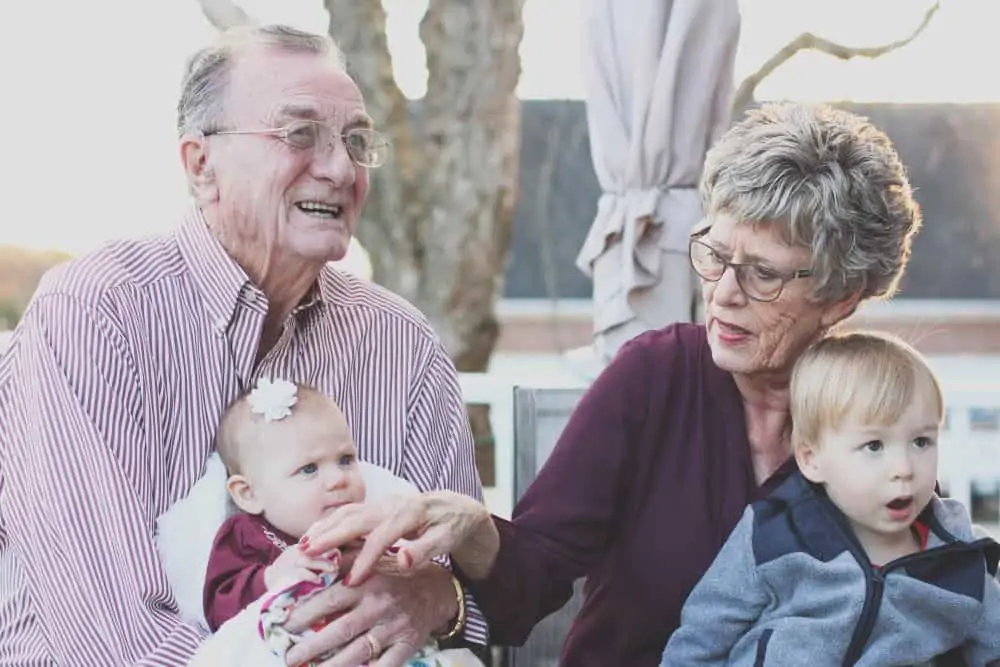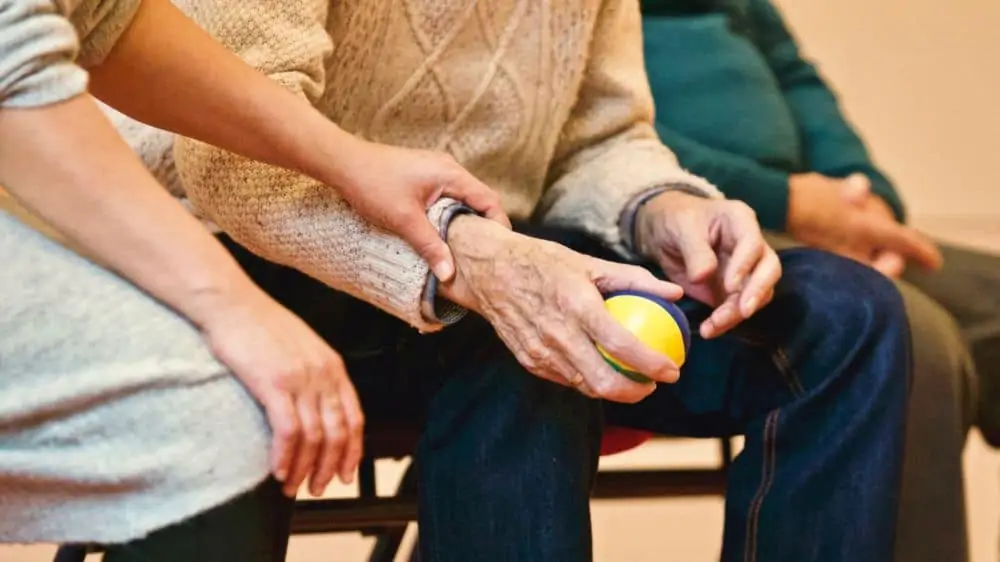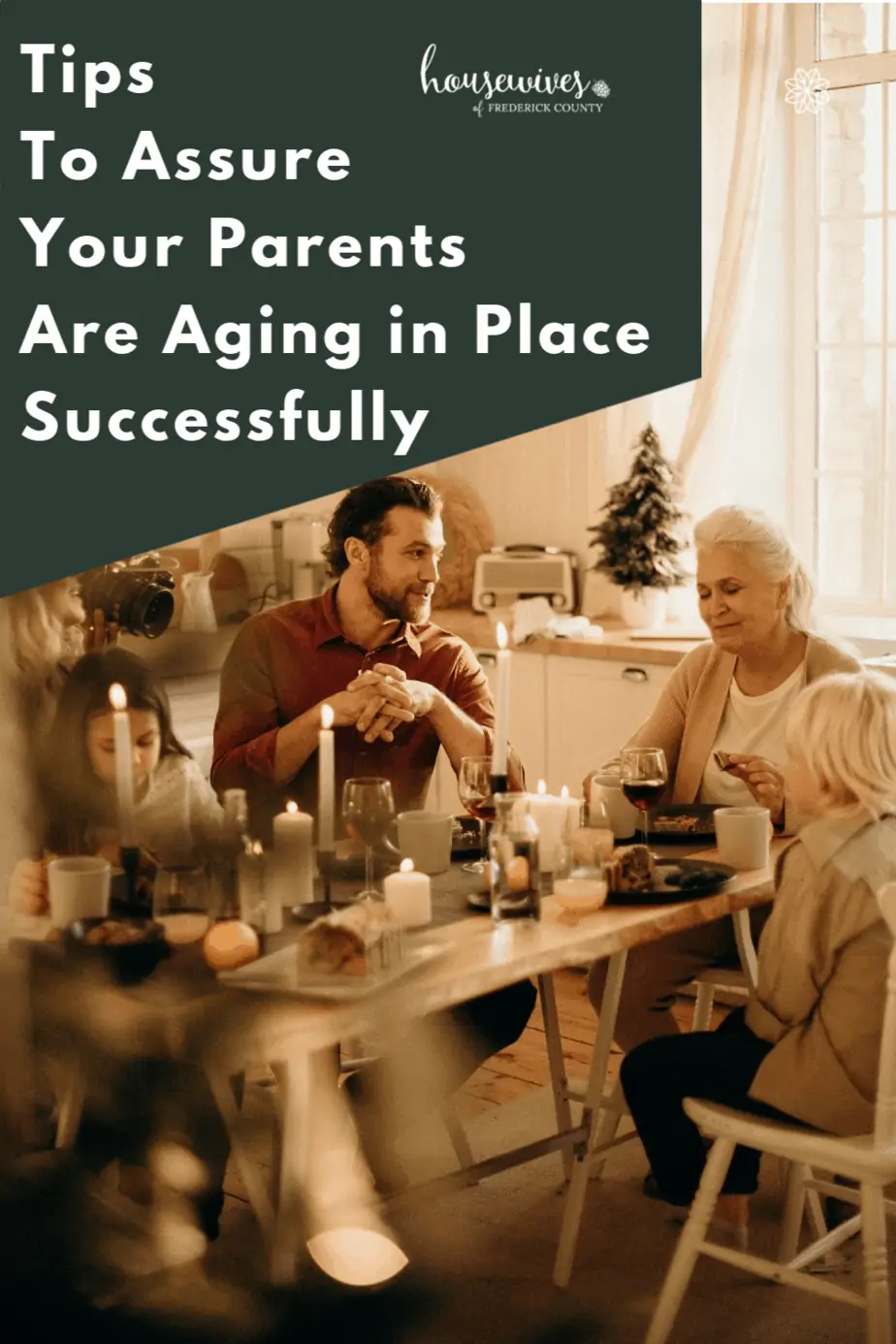Last updated on January 24th, 2024
I would like to give you the best tips to assure that your parents are aging in place successfully.
Being an Occupational Therapist who works specifically with the aging population, I have over 20 years of experience in this specific topic.
I’m passionate about what I do to help your aging loved ones remain living in their homes for as long as possible.
Aging in Place Successfully
What is Meant by Aging in Place?
First, What is the definition of aging in place?
Aging in place is the ability to live in your own home safely, independently, and comfortably no matter your age, your income or your ability level.
The Sandwich Generation Stress

I’m at that time in my life when I’m raising children AND beginning to need to oversee my parents’ well-being.
This scenario is called “The Sandwich Generation”.
Needless to say, it can get stressful!
I’m in my 40’s now (OK, I’ve been in my 40’s for a few years now), and I am feeling the tables turn with my parents.
Obviously, in a lot of ways I don’t like this feeling.
For example, I kinda like still being the “kid” and still feeling like my parents are in charge.
However, the reality is becoming clear that, yes, my parents are aging.
Thank God they are still quite functional and look younger than their years, but the fact remains that we can’t stop the hands of time.
How Can I Help My Aging Parents?

Undoubtedly, life is about choices.
Clearly, the writing is on the wall.
Therefore, I am making the choice to be proactive.
As a result, I’m doing my best to assure that both of my parents remain as safe, happy and independent as possible, for as long as possible!
The funny thing is – I’ve been doing this for years with my own patients as an Occupational Therapist.
Aging in Place Solutions From An Occupational Therapist
As most of you know, I am an Occupational Therapist, and I’ve worked in home health serving patients for the last 10 years.
Additionally, I’ve performed environmental assessments for the Medicaid Waiver program in Maryland for the last 20 years.
Consequently, much of my time when working with these patients (who are mostly elderly people) is spent assessing the person’s home environment.
Importantly, I take into consideration any ailments the person has such as:
- Decreased vision
- Loss of hearing
- Losing muscle strength
- Decreased range of motion
Then I make recommendations regarding how we can change the environment for optimal safety and independence.
Notably, I think most adults who have aging parents could benefit from the following information.
1. Your Parents May Not Want to Listen To You
First, keep in mind that your parents may not be very willing for you to make suggestions about the way their home is set up, or the way they are doing things.
Believe me – in working with patients and families this is extremely common and probably half the battle!
Indeed, If you feel that any advice coming from you would create problems:
- You can throw printed information their way as hints.
- Or even talk to your parent’s doctor about your concerns.
Without a doubt, if your parent is demonstrating a change in function in his/her daily life, most often than not, it is appropriate to ask the doctor for occupational and/or physical therapy.
2. What Ailments Do Your Parents Have?

Second, the next thing to take into consideration is – what ailments does your parent have?
Although one can justify ailments as the rite of passage of “getting old”, the fact is that any deficit can be dangerous to your loved one.
Absolutely, it’s better to address it now than to wait until there is a fall or injury.
Is your parent:
- Having a harder time seeing?
- Losing their hearing?
- Struggling with keeping his/her balance?
- Having trouble with sensation in his/her hands or feet?
- Becoming weaker?
- Having difficulty with endurance and activity tolerance?
- Having symptoms of dizziness?
Obviously, any of the above should be directed to his/her physician for medical attention.
Nonetheless, there are so many things you can do on your end to help your parent remain in his/her home safely.
3. Assess Your Aging Parents’ Home Environment
Third, once you consider what deficits your parent may have, then you can look at his/her environment at home.
There are many checklists and assessment tools that can be used to do this.
For instance, Rebuilding Together has an excellent tool to identify problem areas and potential remedies for increasing safety.
4. Examples of Commonly Used Adaptive & Durable Medical Equipment For Aging in Place
Fourth, here’s a list of some aging in place products that will assist your elderly parents in their day-to-day lives:
- Reacher/Grabber
- Sock-Aide
- Long-Handled Bath Sponge
- Button Hook
- Shower Chair
- Grab Bars – If grab bars need to be installed, I recommend that they only be installed by an experienced contractor.
- Tub Rail
- Elevated Toilet
5. Great Places to Buy Adaptive & Durable Medical Equipment
Finally, here are some of my go-to places to purchase adaptive & durable medical equipment are:
- Walmart – Products can be found near the pharmacy and online.
- BP Gamma Medical here in Frederick, MD
- Med One Pharmacy in Middletown, MD
- Patterson Medical
This is just a quick and dirty discussion about your options when helping your aging parents “age in place” safely.
Aging in Place Programs
There is a wealth of great information online and I will leave you with some sites to explore:
- Rebuilding Together
- Aging in Place – click their link here
Lastly, if you have any personal questions regarding this topic, I will be happy to help steer you in the right direction.
Just write to me in the “contact us” section of our blog.
In the meantime, here are a few other posts relating to Occupational Therapy and your aging parents:
What is Occupational Therapy? Your Answer From An Occupational Therapist
- Best Happy Hour Deals in Frederick, MD (2025) - July 8, 2025
- 27 Free Party Rooms in Frederick, MD For Birthdays + Special Events - May 27, 2025
- Best Weekend Trips From Frederick MD (All Within 3 Hours!) - May 21, 2025


Comments are closed.